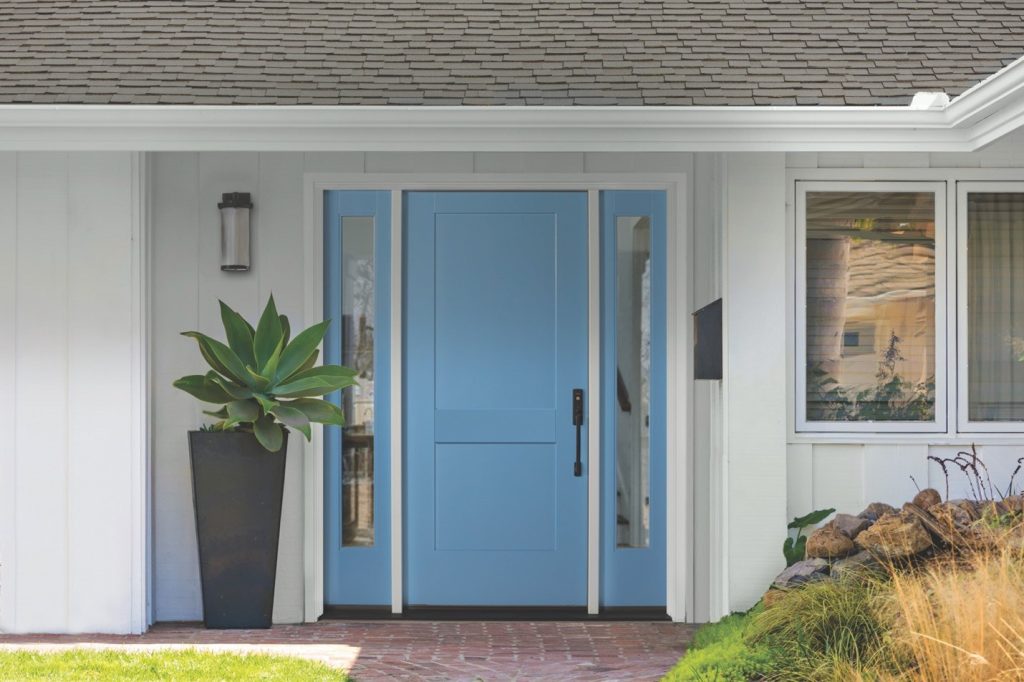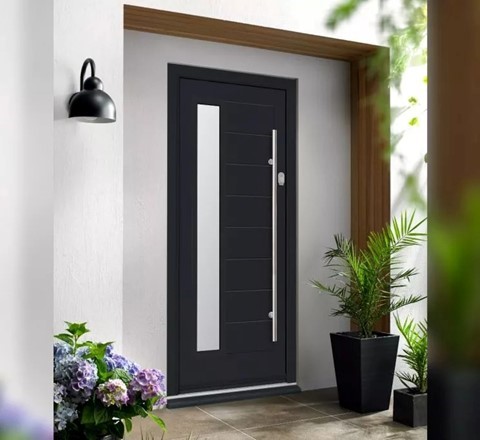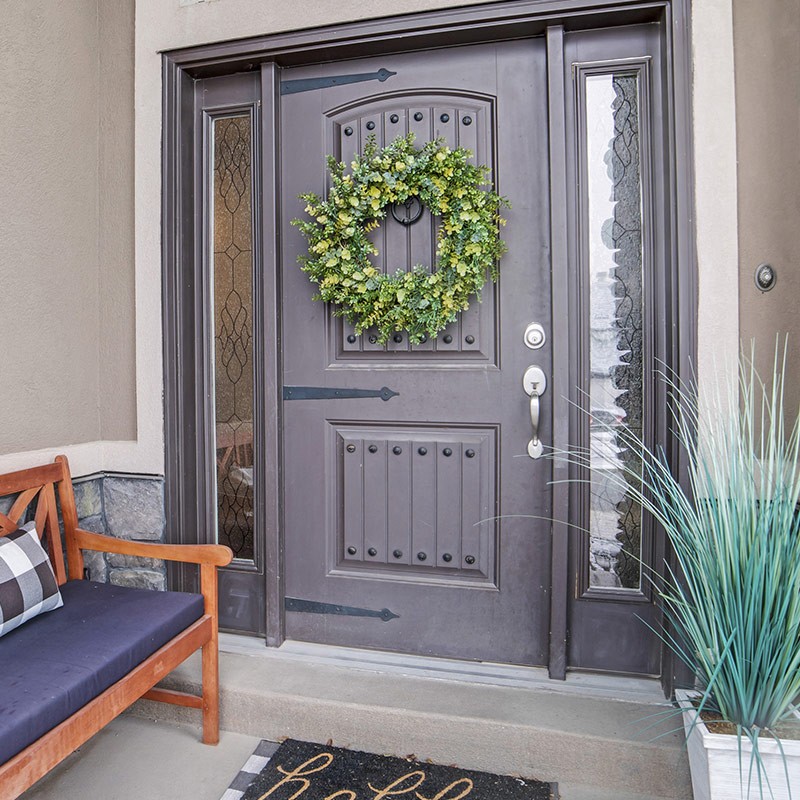Wood vs. Steel vs. Fiberglass: Best Front Doors for Woodbridge Weather
Last winter’s ice storm left a calling card on your front doors woodbridge—warping at the bottom, moisture damage along the edges, and a draft that no amount of weatherstripping seems to fix. Meanwhile, your neighbor just installed a stunning new entry door that looks showroom-fresh despite facing the same brutal conditions. The difference? They chose the right material for Woodbridge’s demanding climate. Your door isn’t just an aesthetic statement; it’s your home’s first line of defense against Ontario’s temperature extremes, and selecting the wrong material means fighting a losing battle against the elements.
Understanding Woodbridge’s Climate Challenges
Woodbridge presents unique challenges for exterior doors that homeowners in milder climates never consider. Located in the Greater Toronto Area near the Humber River, this Vaughan community experiences the full spectrum of Ontario weather patterns. Summer brings intense heat and humidity that causes materials to expand, while winter temperatures plunge well below freezing, causing contraction and stress on door components.
Moreover, the freeze-thaw cycles prove particularly destructive. When moisture penetrates door materials and subsequently freezes, expansion occurs that can crack, warp, or separate components. This cycle repeats dozens of times each season, accelerating wear on poorly chosen materials. Additionally, heavy snowfall accumulation against doors creates prolonged moisture exposure that tests even quality craftsmanship.
Understanding these climate realities becomes essential when comparing wood doors, steel door options, and fiberglass alternatives. Each material responds differently to these environmental stresses, making material selection critical for long-term performance and security.
Wood Doors: Timeless Beauty with Maintenance Requirements

The Appeal of Natural Wood
Wood doors remain the gold standard for traditional elegance and design flexibility. Species like mahogany, walnut, and maple each offer distinct grain patterns and color tones that enhance curb appeal. Custom wood doors allow unlimited design possibilities through raised panel designs, custom staining options, and integration of decorative windows or sidelites.
The craftsmanship evident in quality exterior wood doors—particularly stile and rail doors—creates architectural statements that composite materials struggle to replicate authentically. Furthermore, wood’s natural insulating properties provide decent energy efficiency when properly constructed with solid core designs.
Advantages of Wood for Woodbridge Homes:
- Unmatched aesthetic warmth and character
- Complete customization through custom staining and door profile options
- Natural insulation properties
- Repairable through sanding and refinishing
- Premium appearance that enhances home value
- Wide selection including mahogany, walnut, maple, and other premium species
The Reality Check: Wood and Ontario Weather
However, wood’s organic nature creates vulnerabilities in Woodbridge’s climate. Moisture absorption causes swelling during humid summers and shrinking during dry winters. This dimensional instability leads to operational issues—doors that stick in summer and create gaps in winter become drafty and compromise security.
Without meticulous maintenance, exterior wood doors deteriorate rapidly. The maintenance services required include regular refinishing every 2-3 years, immediate attention to any finish damage, and constant monitoring for moisture damage. Even minor finish failures allow water penetration that leads to rot, particularly along bottom rails and joints.
Moreover, wood’s vulnerability to insects, warping, and splitting increases in climates with temperature extremes. While pre-hung door systems with exterior pre-hung systems offer some protection through factory finishing, ongoing maintenance remains non-negotiable.
Wood Door Considerations:
- Requires refinishing every 2-3 years in Ontario climate
- Vulnerable to moisture damage and warping
- Higher maintenance demands than alternatives
- Best suited for protected entryways with overhangs
- Premium initial cost plus ongoing maintenance expenses
- Consider fire-rated doors for specific applications
Steel Front Doors: Security Meets Energy Performance

The Strength Factor
Steel front doors woodbridge dominate the market for homeowners prioritizing security and energy efficiency. A quality steel door provides impact-resistant protection against forced entry attempts while delivering exceptional thermal performance through insulated core construction.
Modern manufacturing techniques create steel doors that replicate traditional door aesthetics, including wood grain textures and raised panel designs. Entry sets and hardware choices further enhance both functionality and design appeal. Additionally, many steel doors feature fire-rated options, providing added safety for homes with attached garages.
Contemporary steel door technology includes features like DraftLOCK technology that minimizes air infiltration, and composite wood edge construction that prevents rust while maintaining structural integrity. The door profile options available today mean steel doors no longer sacrifice design for performance.
Steel Door Advantages:
- Superior security against break-in attempts
- Excellent energy-efficient windows and doors ratings when paired with quality sealed glass units
- Impact-resistant construction
- Lower maintenance than wood
- Cost-effective compared to premium materials
- Fire-rated doors available for safety applications
- Stable performance across temperature ranges
Steel’s Climate Performance in Woodbridge
Steel front door woodbridge conditions due to dimensional stability. Unlike wood, steel won’t warp, crack, or split regardless of temperature or humidity fluctuations. The material maintains consistent operation throughout seasonal changes, eliminating the sticking and gap issues that plague wood doors.
Energy efficiency stands out as a primary steel door benefit. Quality models feature polyurethane foam cores that provide superior insulation values. When combined with energy-efficient vinyl windows or casement windows, double hung windows, or picture windows in the door design, overall home energy performance improves significantly.
However, steel isn’t without considerations. Dents from impacts—whether from debris, equipment, or accidents—prove difficult to repair invisibly. Surface rust can develop if the finish is compromised, requiring prompt attention with sealant and touch-up paint. Furthermore, steel conducts temperature, meaning without thermal breaks, the door interior can feel cold in winter.
Steel Door Climate Considerations:
- Denting possible from impacts
- Finish damage requires immediate attention to prevent rust
- Can feel cold to touch in winter without thermal breaks
- Condensation possible on interior surface in extreme cold
- Magnetic weatherstripping provides superior seal against drafty conditions
Fiberglass Front Doors: The Modern Performance Champion
Technology Meets Aesthetics
Fibreglass front doors woodbridge represent the cutting-edge technology in entry door design. These doors combine the aesthetic appeal of wood with performance characteristics that surpass both wood and steel in many applications. Advanced manufacturing techniques create remarkably realistic wood grain textures that fool most observers, while Designer Series and Elite Series options rival custom wood doors in sophistication.
The construction involves fiberglass skins bonded to engineered cores—typically polyurethane foam—creating lightweight yet incredibly strong structures. This composite approach delivers benefits unavailable in single-material doors. Moreover, fiberglass accepts custom staining, allowing homeowners to achieve rich wood tones without wood’s maintenance burden.
Contemporary product lines from Canadian manufacturers incorporate innovations like Low-E coating technology in glass components, fusion welded corners for water-tight construction, and ASTM-approved acrylic system finishes that withstand UV exposure without fading or chalking.
Fiberglass Door Benefits:
- Wood grain appearance without wood maintenance
- Superior dimensional stability
- Won’t rust, rot, warp, or split
- Accepts staining for authentic wood appearance
- Excellent energy efficiency ratings
- Impact-resistant construction
- Minimal maintenance requirements
- Long-term color stability

Why Fiberglass Excels in Woodbridge
Fiberglass front doors Woodbridge address virtually every challenge presented by front door Woodbridge weather. The material remains completely stable across Ontario’s temperature extremes, maintaining consistent operation whether facing +35°C summer heat or -25°C winter cold. Unlike wood that swells and steel that conducts temperature, fiberglass performs consistently year-round.
Moisture proves irrelevant to fiberglass. The material doesn’t absorb water, eliminating concerns about rot, swelling, or freeze-thaw damage. This characteristic makes fiberglass ideal for entries facing prevailing weather or lacking protective overhangs. Even with snow accumulation or ice buildup, fiberglass maintains integrity.
The energy efficiency of fiberglass doors often exceeds alternatives. The material itself provides insulation, and when combined with polyurethane cores and energy-efficient windows and doors technologies like argon gas fills and LoĒ glass coatings in sealed glass units, thermal performance rivals window replacement projects using energy-efficient vinyl windows with Low-e coated windows technology.
Furthermore, fiberglass requires minimal maintenance—occasional washing suffices, with no refinishing, no rust prevention, and no structural concerns even decades after installation.
Fiberglass Performance Features:
- Complete dimensional stability regardless of temperature or humidity
- Zero moisture absorption prevents all water-related issues
- Maintenance limited to occasional cleaning
- Energy efficiency exceeds most wood and many steel doors
- Resistant to denting, scratching, and impact damage
- Color-fast finishes resist fading in harsh UV exposure
- Compatible with modern hardware choices and entry sets
Energy Efficiency Considerations Across Materials
When evaluating front door Woodbridge installations, energy efficiency directly impacts comfort and utility costs. Ontario’s temperature extremes mean your front door woodbridge faces 50+ degree temperature differentials between inside and outside air. Poor door performance literally throws money into the street.
All three materials can achieve good energy ratings when properly constructed. However, inherent material properties create differences. Wood provides natural insulation but gaps from dimensional changes undermine performance. Steel offers excellent core insulation but conducts temperature at edges and hardware points. Fiberglass combines insulation with dimensional stability for consistent performance.
Energy Performance Factors:
- Core insulation (polyurethane foam provides best performance)
- Weatherstripping quality (magnetic seals outperform traditional)
- Glass unit technology (Low-E coating technology and argon gas critical)
- Door-to-frame seal integrity (depends on dimensional stability)
- Thermal breaks (essential for steel, built-in for fiberglass)
- Professional installation (critical for all materials)
Modern exterior doors increasingly incorporate technologies borrowed from window replacement projects. Triple-sealed welded frames, polymer spacer systems, and Low-e coated windows in door glass create systems rivaling energy-efficient vinyl windows in thermal performance. When selecting entry doors, reviewing specifications similar to those used for awning windows, casement windows, or sliding patio doors ensures optimal energy efficiency.
Why Choose Doormatic
Doormatic brings specialized expertise in door and window installation serving Woodbridge, Vaughan, and throughout the Greater Toronto Area. Our relationships with leading Canadian manufacturers ensure access to top product lines from companies like Canadian Choice Windows and Doors and other quality manufacturers. We understand Ontario’s climate challenges intimately and recommend solutions proven effective in local conditions. Our installation teams deliver craftsmanship that matches the quality of the products we install, backed by comprehensive warranties and ongoing support. From initial consultation through completion, Doormatic provides the expertise and service that transforms your entry door investment into lasting performance and beauty.
Conclusion
Choosing between wood, steel, and fiberglass front door Woodbridge installations requires balancing aesthetics, performance, maintenance, and budget. While wood offers unmatched beauty, fiberglass delivers wood’s appearance with superior weather resistance and minimal maintenance. Steel provides exceptional security and energy efficiency at moderate cost. For most Woodbridge homeowners facing Ontario’s demanding climate, fiberglass represents the optimal combination of appearance, performance, and value—though individual circumstances may favor alternatives. Ultimately, professional guidance ensures your selection serves your home excellently for decades.
Ready to Transform Your Entry?
Contact Doormatic today for your free in-home estimate. Our experts will assess your specific needs, discuss material options suited to Woodbridge weather, and provide recommendations tailored to your home, style preferences, and budget. Visit our website or use our contact form to schedule your consultation and discover how the right door transforms your home’s security, efficiency, and curb appeal.